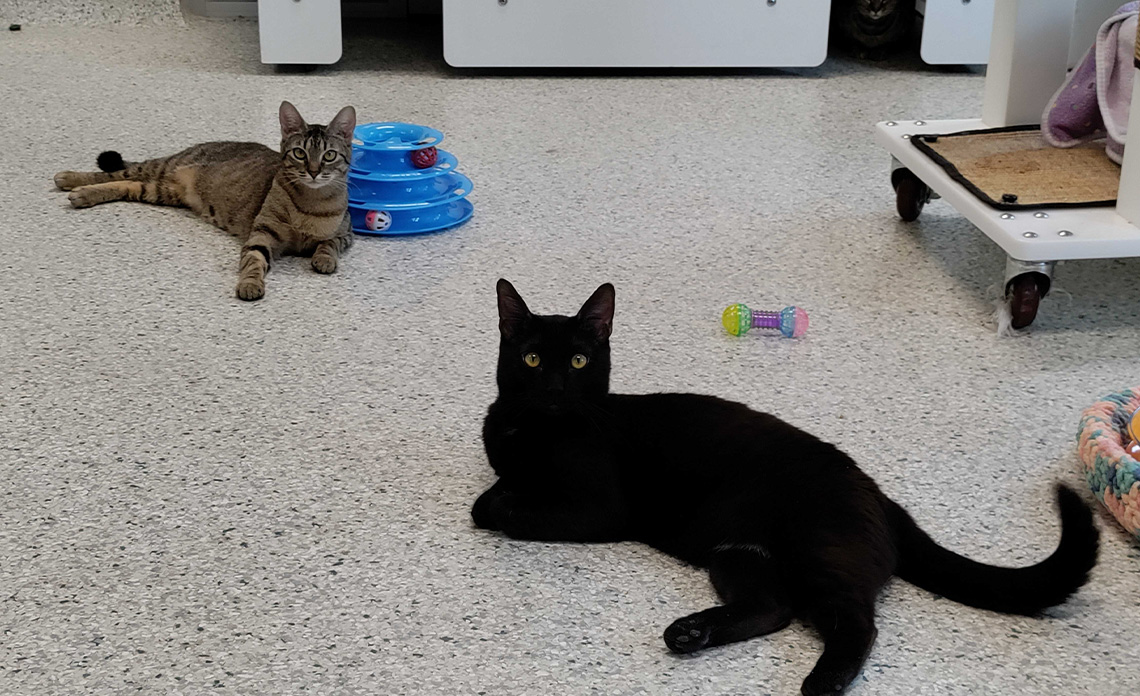Bringing a new cat home can be an exciting and joyful experience. However, introducing a new cat to your existing feline friend requires careful planning and consideration. Cats are creatures of habit and can be skeptical of new housemates. To avoid potential conflicts and create a harmonious environment, it’s crucial to follow a structured introduction process.
Set up a safe room for your new cat
Creating a safe and comfortable space for your new cat is essential. Dedicate a separate room where your new cat can feel secure and gradually acclimate to their new surroundings. Provide them with their own litter box, food, and water dishes, along with cozy resting places. If your new cat is feeling nervous, consider providing covered beds or hiding spots to help them feel more at ease. Spend quality time with your new cat in their safe room, bonding through play and affection. Mealtime can be an excellent opportunity for further bonding.
Allow scent exchanges and door interactions
Cats rely heavily on their sense of smell, so it’s important to allow your current pets to become familiar with the scent of the new cat. Let your existing pets smell the new cat through the door and investigate their scent. You can also swap bedding between the cats to allow for an up-close smell and to blend their scents within the household. Introducing treats or moving food bowls near the door can help create positive associations between the cats. This gradual scent exchange and interaction through the door will lay the groundwork for their eventual face-to-face meeting.
Gradual exploration of the house
Once your new cat has settled comfortably in their safe room, it’s time to allow them to explore the rest of the house. Make sure to confine your existing pets to another room during this phase to prevent accidental encounters. Cats are most active during dawn and dusk, so opening the door to their safe area during these times can encourage natural exploration. Avoid forcing your new cat to venture out but let them take their time. After exploring, always return them to their safe area before letting other animals out.
Monitor interactions and supervised introductions
As your cats interact through the doorway, carefully observe their behavior and body language. If they display friendly interest in each other, you can try allowing your established cat out during supervised free roaming time for the new cat. Ensure there are ample hiding places and escape routes for each cat. Providing enough space is crucial, as feeling trapped or threatened may lead to unwanted conflicts. Keep in mind that first impressions matter, and it’s your responsibility to facilitate positive experiences for both cats. If introductions prove challenging, seeking assistance from a professional behaviorist or trainer can be beneficial.
Introducing a new cat to your existing feline companion requires patience, careful planning, and gradual steps. By creating a safe room, allowing scent exchanges, gradual exploration, and monitoring interactions, you can set a solid foundation for a successful relationship between your cats. Remember, each cat is unique, and the process may take time. If you encounter difficulties, don’t hesitate to seek guidance from experts in cat behavior and training. With proper introduction and guidance, your cats can build a harmonious bond and enrich each other’s lives in the long run.
For expert advice on behavior and training, please reach out to our behavior team or visit our resources page.
Stay up to date
Follow us on Facebook, Instagram and Twitter for the latest news.





